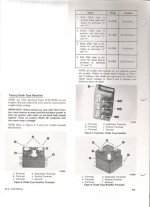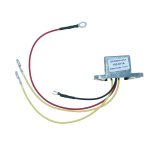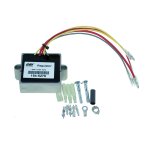Good morning,
I am trying to trace down some stray voltage. I am starting to think the culprit is the rotor. how much continuity should be from the tip of the rotor to the shaft? I am getting a very little, but I would think there shouldn't be any at all.
Here is the link to my previous post:
http://www.marineengine.com/boat-fo...50SS-Still-having-electrical-problems-trouble
It runs well with a bit of a rough idle. I am also getting a very small spark every time I adjust the carbs which jumps to the screwdriver. The screwdriver is grounded through the hole on the front plate and as it comes into contact with the idle adjustment screw a small spark jumps.
Thank you,
Matt Chonka
I am trying to trace down some stray voltage. I am starting to think the culprit is the rotor. how much continuity should be from the tip of the rotor to the shaft? I am getting a very little, but I would think there shouldn't be any at all.
Here is the link to my previous post:
http://www.marineengine.com/boat-fo...50SS-Still-having-electrical-problems-trouble
It runs well with a bit of a rough idle. I am also getting a very small spark every time I adjust the carbs which jumps to the screwdriver. The screwdriver is grounded through the hole on the front plate and as it comes into contact with the idle adjustment screw a small spark jumps.
Thank you,
Matt Chonka






